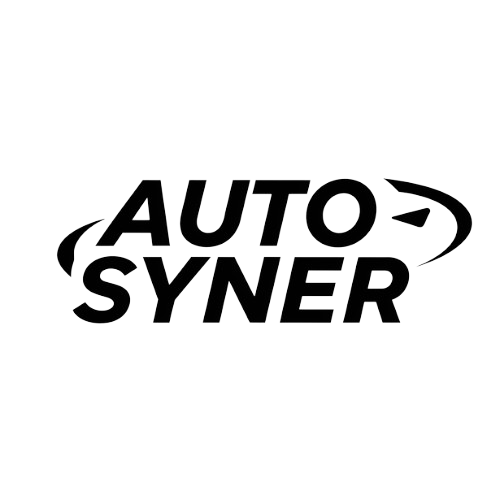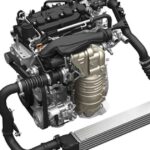In the complex world of business finances and tax strategies, finding legitimate ways to reduce your tax burden is crucial for maintaining profitability and fostering growth. One often overlooked strategy involves the tax write-off for vehicles weighing over 6,000 pounds.
This provision, known as the Section 179 deduction, can offer significant tax advantages for business owners and self-employed individuals who use heavy vehicles for work purposes. In this comprehensive guide, we’ll explore the ins and outs of this tax benefit, its requirements, and how it can potentially save you thousands of dollars.
Understanding Section 179 Deductions
What is Section 179?
Section 179 of the Internal Revenue Code is a tax provision that allows businesses to deduct the full purchase price of qualifying equipment and/or software purchased or financed during the tax year. This provision was designed to encourage small businesses to invest in themselves by purchasing necessary equipment. While it covers a wide range of business assets, it’s particularly beneficial for those investing in heavy vehicles for business use.
The beauty of Section 179 lies in its ability to accelerate depreciation. Instead of spreading the deduction over several years, businesses can take the entire deduction in the year the equipment is put into service. This immediate expensing can significantly reduce the tax burden for the year of purchase, freeing up cash flow for other business needs.
Why 6,000 Pounds?

The 6,000-pound threshold is significant because it’s the point at which vehicles are classified as “heavy” by the IRS. This classification allows for more generous tax treatment compared to lighter vehicles. The reasoning behind this is that vehicles over this weight are more likely to be used primarily for business purposes rather than personal use.
This weight limit wasn’t chosen arbitrarily. It aligns with the Federal Highway Administration’s vehicle classifications, where Class 2 trucks (which include many popular SUVs and pickup trucks) start at 6,001 pounds. The IRS adopted this standard to create a clear demarcation between vehicles that are likely to be used for personal transportation and those more suited for business purposes.
Qualifying Vehicles
To be eligible for the Section 179 deduction, a vehicle must meet certain criteria:
- It must be used for business purposes more than 50% of the time
- The vehicle must have a gross vehicle weight rating (GVWR) of more than 6,000 pounds
- It must be placed in service during the tax year for which you’re claiming the deduction
Some examples of vehicles that often qualify include:
- Large SUVs (e.g., Chevrolet Tahoe, Ford Expedition, Toyota Sequoia)
- Full-size pickup trucks (e.g., Ford F-150, Ram 1500, Chevrolet Silverado)
- Vans (e.g., Ford Transit, Mercedes-Benz Sprinter, Chevrolet Express)
- Certain luxury SUVs (e.g., Cadillac Escalade, Porsche Cayenne, BMW X5)
It’s important to note that the vehicle’s actual weight doesn’t matter; it’s the GVWR that counts. This rating can usually be found on a sticker inside the driver’s side door frame or in the vehicle’s manual.
More Post:
Understanding Car Parts And Their Functions
Benefits of the Section 179 Deduction
Immediate Write-Off
One of the most significant advantages of the Section 179 deduction is that it allows you to write off the entire cost of the vehicle in the year it’s purchased, rather than depreciating it over several years. This can result in a substantial tax saving in the year of purchase.
For example, if you purchase a $70,000 SUV for your business and use it 100% for business purposes, you could potentially deduct the entire $70,000 from your taxable income in the year of purchase. Compare this to standard depreciation, which might only allow you to deduct a fraction of that amount each year over a 5-year period.
Increased Deduction Limit
For the 2023 tax year, the maximum Section 179 deduction is $1,160,000. This means you can potentially write off the full cost of your vehicle, provided it doesn’t exceed this limit and your business income is sufficient to support the deduction.
It’s worth noting that this limit has increased significantly over the years. In 2017, for instance, the limit was $510,000. The substantial increase reflects the government’s desire to encourage business investment in equipment and vehicles.
Flexibility
You have the option to take a partial deduction if you don’t want to use the full amount in a single year. This flexibility allows you to optimize your tax strategy based on your specific financial situation.
For instance, if taking the full deduction would push you into a lower tax bracket where you’d lose other tax benefits, you might choose to take only a portion of the deduction this year and carry the rest forward to future tax years.
How to Claim the Deduction

To claim the Section 179 deduction for your heavy vehicle:
- Purchase or finance a qualifying vehicle and place it in service during the tax year
- Use IRS Form 4562 to report your Section 179 deduction
- Keep detailed records of your vehicle’s business use, including mileage logs and receipts for expenses
It’s crucial to maintain meticulous records of your vehicle’s business use. This includes a mileage log detailing the date, destination, and purpose of each trip, as well as receipts for all vehicle-related expenses such as fuel, maintenance, and insurance.
Limitations and Considerations
While the Section 179 deduction can be highly beneficial, there are some limitations and factors to consider:
Business Income Limitation
The deduction cannot exceed your business income for the year. If your deduction would put your business at a loss, the excess can be carried forward to future tax years.
For example, if your business income for the year is $80,000 and you’re trying to deduct a $90,000 vehicle, you can only deduct up to $80,000 this year. The remaining $10,000 would be carried forward to the next tax year.
Luxury Vehicle Limits
For passenger vehicles, the IRS imposes lower limits on the amount that can be deducted. However, many vehicles over 6,000 pounds are exempt from these limits.
In 2023, the luxury vehicle depreciation caps for passenger vehicles are:
- $11,200 for the first year
- $18,000 for the second year
- $10,800 for the third year
- $6,460 for each subsequent year
However, vehicles over 6,000 pounds GVWR are typically exempt from these limits, which is another significant advantage of the Section 179 deduction for heavy vehicles.
Recapture Rules
If you use the vehicle for less than 50% business use in subsequent years, you may have to recapture part of the deduction as income.
For instance, if you claimed a $70,000 deduction on a vehicle in Year 1, but in Year 2 your business use drops to 40%, you would need to recapture a portion of that deduction as income on your Year 2 tax return.
Alternative Minimum Tax (AMT)
The Section 179 deduction can affect your AMT calculation, potentially reducing the benefit for some taxpayers. It’s important to consider the interplay between Section 179 and AMT when planning your tax strategy.
Case Study: Maximizing the Deduction
Let’s consider a hypothetical example to illustrate how the Section 179 deduction can work in practice:
Sarah owns a small construction company and decides to purchase a new Ford F-250 pickup truck for $65,000 to use in her business. The truck has a GVWR of 10,000 pounds, making it eligible for the Section 179 deduction.
- Purchase price: $65,000
- Business use: 80%
- Deductible amount: $65,000 x 80% = $52,000
Assuming Sarah’s business income is sufficient and she meets all other requirements, she can deduct the entire $52,000 in the year of purchase. If she’s in the 24% tax bracket, this could result in a tax saving of $12,480 ($52,000 x 24%) for that year.
This example demonstrates how powerful the Section 179 deduction can be. Without this provision, Sarah would have to depreciate the vehicle over several years, resulting in much smaller annual deductions and delayed tax benefits.
Common Mistakes to Avoid
When claiming the Section 179 deduction for heavy vehicles, be aware of these potential pitfalls:
- Overestimating business use: The IRS may scrutinize claims of high business use percentages, so be sure to keep accurate records. A mileage log is essential for substantiating your claim.
- Failing to place the vehicle in service: The deduction is only available for vehicles placed in service during the tax year. Simply purchasing the vehicle isn’t enough; it must be ready and available for its intended use in your business.
- Ignoring state tax implications: Some states may not fully conform to federal Section 179 rules, so check your state’s regulations. You may find that your state tax benefit is less generous than the federal benefit.
- Not considering future tax years: While the immediate write-off is appealing, consider how it might affect your tax situation in future years. If you anticipate being in a higher tax bracket in coming years, it might be more beneficial to use regular depreciation.
- Misunderstanding luxury vehicle limits: Be aware that some vehicles, despite weighing over 6,000 pounds, may still be subject to luxury vehicle limitations. This typically applies to SUVs with a GVWR between 6,000 and 14,000 pounds, which have a special limit of $27,000 for 2023.
Final Thought
The Section 179 deduction for vehicles over 6,000 pounds is a valuable tax provision that savvy business owners should consider.
By understanding its nuances and consulting with tax professionals, you can make informed decisions that could lead to substantial tax savings and improved business operations.
As with all tax strategies, the key is to approach it thoughtfully, maintain thorough documentation, and always prioritize the legitimate needs of your business.
FAQs About Tax Write-Offs for Vehicles Over 6,000 lbs
Can I claim the Section 179 deduction if I lease a vehicle?
Generally, no. The Section 179 deduction is available for purchased or financed vehicles, not leased ones. However, if you have a lease-to-own agreement, you may be eligible once you exercise the purchase option.
What if I use the vehicle for both business and personal purposes?
You can only deduct the percentage of the vehicle’s cost that corresponds to its business use. For example, if you use the vehicle 70% for business, you can deduct 70% of its cost under Section 179.
Is there a limit to how many vehicles I can claim under Section 179?
There’s no specific limit on the number of vehicles you can claim, but the total deduction is subject to the annual Section 179 limit ($1,160,000 for 2023) and your business income limitation.
Can I combine the Section 179 deduction with bonus depreciation?
Yes, you can use bonus depreciation for any remaining cost that exceeds the Section 179 limit or for the portion you choose not to deduct under Section 179.
What records do I need to keep to support my Section 179 claim?
You should maintain detailed mileage logs, receipts for all vehicle-related expenses, and documentation showing the vehicle’s weight rating and purchase price. It’s also wise to keep records of how the vehicle is used for business purposes.







